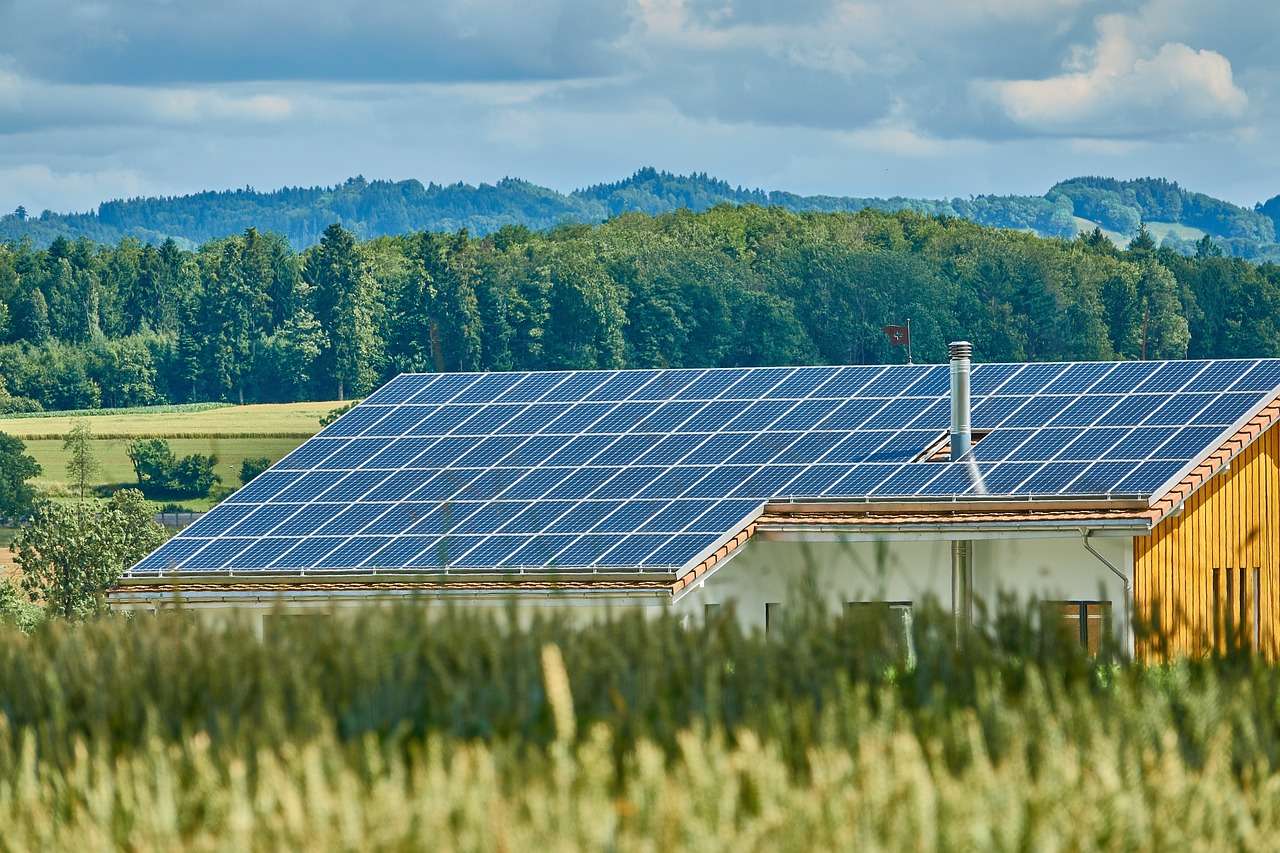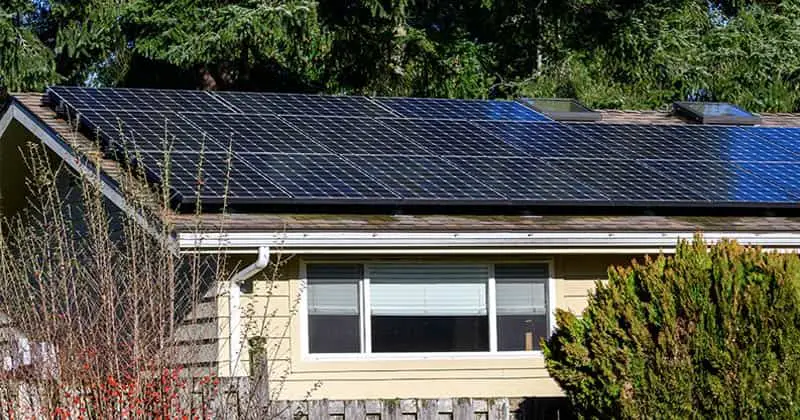Living in a region with abundant sunshine might be the assumed prerequisite for harnessing the power of solar panels, but could cloudy climates also benefit from this renewable energy source? It’s a question that many individuals find themselves pondering when contemplating the installation of solar panels. Contrary to popular belief, cloudy climates can still generate significant solar energy, thanks to advancements in solar panel technology. In this article, I will explore the potential of solar panels in cloudy climates and shed light on how they can still be a viable and eco-friendly energy solution.
Optimizing Solar Panel Efficiency in Cloudy Climates
When it comes to solar panel efficiency, cloudy climates pose a unique challenge. The amount of sunlight that reaches the Earth’s surface is significantly reduced in these areas, which can impact the performance of solar panels. However, with the right strategies and technologies, it is still possible to harness solar power and optimize solar panel efficiency in cloudy climates.

Understanding the Impact of Cloud Cover on Solar Panel Performance
Cloud cover has a direct impact on solar panel performance. Solar panels generate electricity by converting sunlight into usable energy. In cloudy climates, the intensity of sunlight is reduced, leading to a decrease in energy production. This means that solar panels may not generate as much electricity as they would in areas with abundant sunshine.
However, it is important to note that solar panels can still operate and produce electricity even in cloudy conditions. While the energy output might be lower, it is still a viable option for generating clean energy. Furthermore, advancements in solar panel technology and optimization techniques have made it possible to improve efficiency even in less sunny climates.
Choosing the Right Solar Panel Technology for Cloudy Climates
To maximize solar panel efficiency in cloudy climates, it is crucial to select the right solar panel technology. Not all solar panels are created equal, and some are better suited for cloudy conditions than others.
One option to consider is amorphous silicon (a-Si) solar panels. These panels perform better under low light conditions compared to traditional crystalline silicon panels. Amorphous silicon panels are also more temperature-tolerant, making them an excellent choice for climates with fluctuating weather patterns.
Another promising technology for cloudy climates is thin-film solar panels. Thin-film panels are lightweight and flexible, allowing for easy installation and versatility. They can also perform well in low light conditions, making them a viable option for areas with cloudy climates.

Factors to Consider When Installing Solar Panels in Cloudy Climates
There are several factors to consider when installing solar panels in cloudy climates. First and foremost, it is important to assess the average cloud cover and sunlight availability in the region. This data can help determine the optimal solar panel capacity needed to meet the desired energy requirements.
Additionally, the tilt angle and positioning of the solar panels play a significant role in maximizing sun exposure. In cloudy climates, it is advisable to position the panels at a steeper angle to capture as much sunlight as possible, especially during peak daylight hours. The installation of an adjustable mounting system can be beneficial in adjusting the panel angles according to the changing seasons.
Moreover, the selection of an appropriate location for the solar panel installation is crucial. Areas with less shading and obstruction from tall buildings or trees are ideal for maximizing solar panel efficiency. An unobstructed southern exposure is considered the most favorable orientation for panels in the Northern Hemisphere.
Positioning and Tilt Angle for Maximum Sun Exposure
To optimize solar panel efficiency in cloudy climates, the positioning and tilt angle of the panels are key considerations. Positioning the solar panels to face south in the Northern Hemisphere or north in the Southern Hemisphere allows for maximum sun exposure throughout the day.
Furthermore, adjusting the tilt angle of the panels can significantly impact energy production. In cloudy climates, it is advisable to increase the tilt angle to capture more sunlight. By tilting the panels at a steeper angle, they can receive more direct sunlight, compensating for the reduced intensity caused by cloudy conditions.
It is also important to periodically adjust the tilt angle throughout the year to align with the changing position of the sun. This ensures optimal sun exposure during different seasons and further enhances the efficiency of the solar panels in cloudy climates.

The Importance of Regular Maintenance and Cleaning
Regular maintenance and cleaning are vital for maintaining optimal solar panel efficiency, especially in cloudy climates. Cloudy weather can lead to the accumulation of dirt, dust, and debris on the surface of the panels, reducing the amount of sunlight they can absorb.
To keep solar panels operating at peak performance, it is crucial to establish a maintenance routine. This includes regular inspections to identify any damage or defects, as well as cleaning the panels to remove any dirt or debris. Many manufacturers recommend using water and a soft sponge or cloth to clean the panels gently. Avoid using abrasive materials or harsh chemicals, as they can cause damage.
By keeping the panels clean and well-maintained, the amount of sunlight reaching the solar cells will be maximized, ensuring optimal energy production even in cloudy climates.
Utilizing Energy Storage Systems for Cloudy Days
In cloudy climates, the fluctuation in solar energy production can be offset by utilizing energy storage systems. These systems allow excess energy generated during sunny periods to be stored and used during cloudy days or times of high energy demand.
Battery storage technologies, such as lithium-ion batteries, are commonly used to store excess energy produced by solar panels. When sunlight is limited, the stored energy can be discharged to power the electrical needs of a home or building. This enables a continuous supply of electricity, reducing reliance on the grid during cloudy periods.
Energy storage systems not only enhance the reliability and self-sufficiency of solar power in cloudy climates but also contribute to overall energy efficiency.
Incentives and Government Programs for Solar Panel Installation in Cloudy Climates
To encourage the adoption of solar energy in cloudy climates, many governments and organizations offer incentives and programs that make solar panel installation more affordable and attractive.
Government rebates and tax incentives are often available to offset the initial costs of installing solar panels. These incentives can significantly reduce the upfront investment, making solar energy more financially viable for homeowners and businesses in cloudy regions.
Additionally, some regions have specific programs that offer grants or low-interest loans for solar panel installations. These programs aim to promote renewable energy adoption and help offset the challenges posed by cloudy climates.
It is important to research and explore the various incentives and programs available in your region to take full advantage of the financial benefits associated with installing solar panels in cloudy climates.
Community Solar Initiatives in Cloudy Regions
Community solar initiatives have gained popularity in recent years as a solution for individuals and businesses in cloudy climates to benefit from solar energy. These programs allow participants to share the solar energy generated from a centralized installation, often located in a sunnier area nearby.
Through community solar programs, residents and businesses in cloudy regions can purchase or subscribe to a share of the solar energy produced by a larger solar array. This provides access to clean energy without the need for individual solar panel installations. These initiatives promote community engagement and expand the reach of solar energy in areas with less sunshine.
Case Studies of Successful Solar Panel Installations in Cloudy Climates
Numerous successful solar panel installations in cloudy climates serve as inspiration and evidence of the feasibility of solar energy in less sunny regions.
For instance, Germany, known for its cloudy skies, has emerged as a global leader in solar energy production. Through efficient panel technology, proper positioning, and government support, Germany has harnessed the potential of solar power to become a renewable energy powerhouse.
Similarly, Seattle, a city renowned for its gloomy weather, has seen a significant increase in solar installations in recent years. Residents and businesses in Seattle have adopted solar power by leveraging advanced panel technology, strategic placement, and support from local incentives. These projects have demonstrated the viability of solar energy in even the cloudiest climates.
Future Trends and Innovations in Solar Panel Technology for Cloudy Climates
The future of solar panel technology looks promising for cloudy climates. Researchers and engineers are continually developing innovative solutions to enhance solar panel efficiency and performance in areas with limited sunlight.
One area of focus is the development of more efficient photovoltaic materials that can generate electricity even under lower light conditions. Advanced cell designs, such as multi-junction and tandem solar cells, are being explored to maximize energy production from diffuse light.
Moreover, advancements in artificial intelligence and predictive analytics are being utilized to optimize solar panel performance based on real-time weather data. These technologies enable solar systems to adapt and adjust in real-time, ensuring maximum energy production even in cloudy climates.
As solar panel technology continues to evolve and adapt to specific climate conditions, the potential for reliable solar energy generation in cloudy climates will only continue to grow.
In conclusion, while cloud cover may impact solar panel efficiency, it is still possible to optimize solar energy generation in cloudy climates. By understanding the impact of cloud cover, choosing the right technology, considering installation factors, implementing proper positioning and maintenance, utilizing energy storage, and taking advantage of incentives and community initiatives, solar panels can thrive even in regions with limited sunshine. With ongoing advancements in technology and a focus on innovation, the future of solar panel efficiency in cloudy climates looks brighter than ever.




